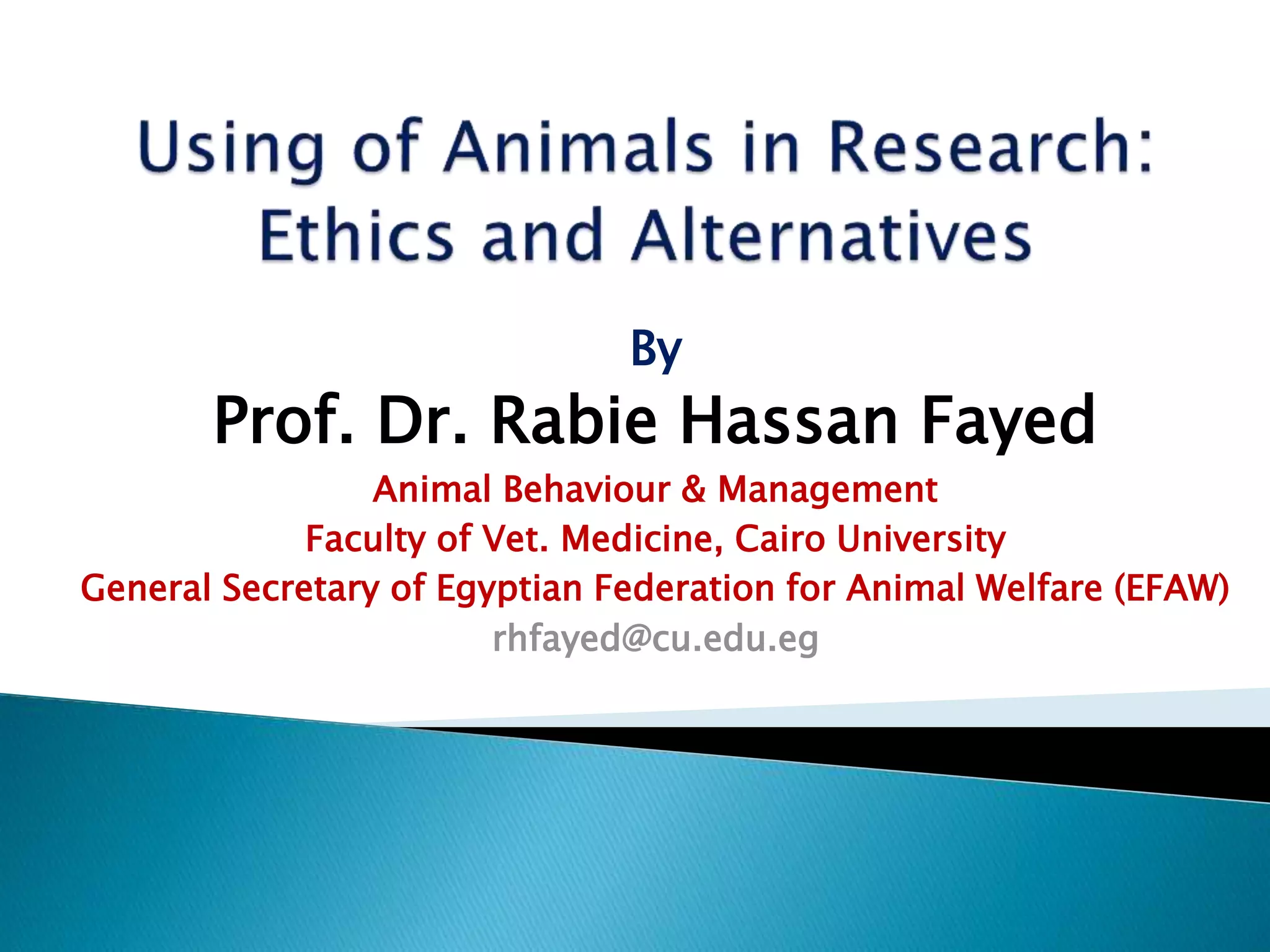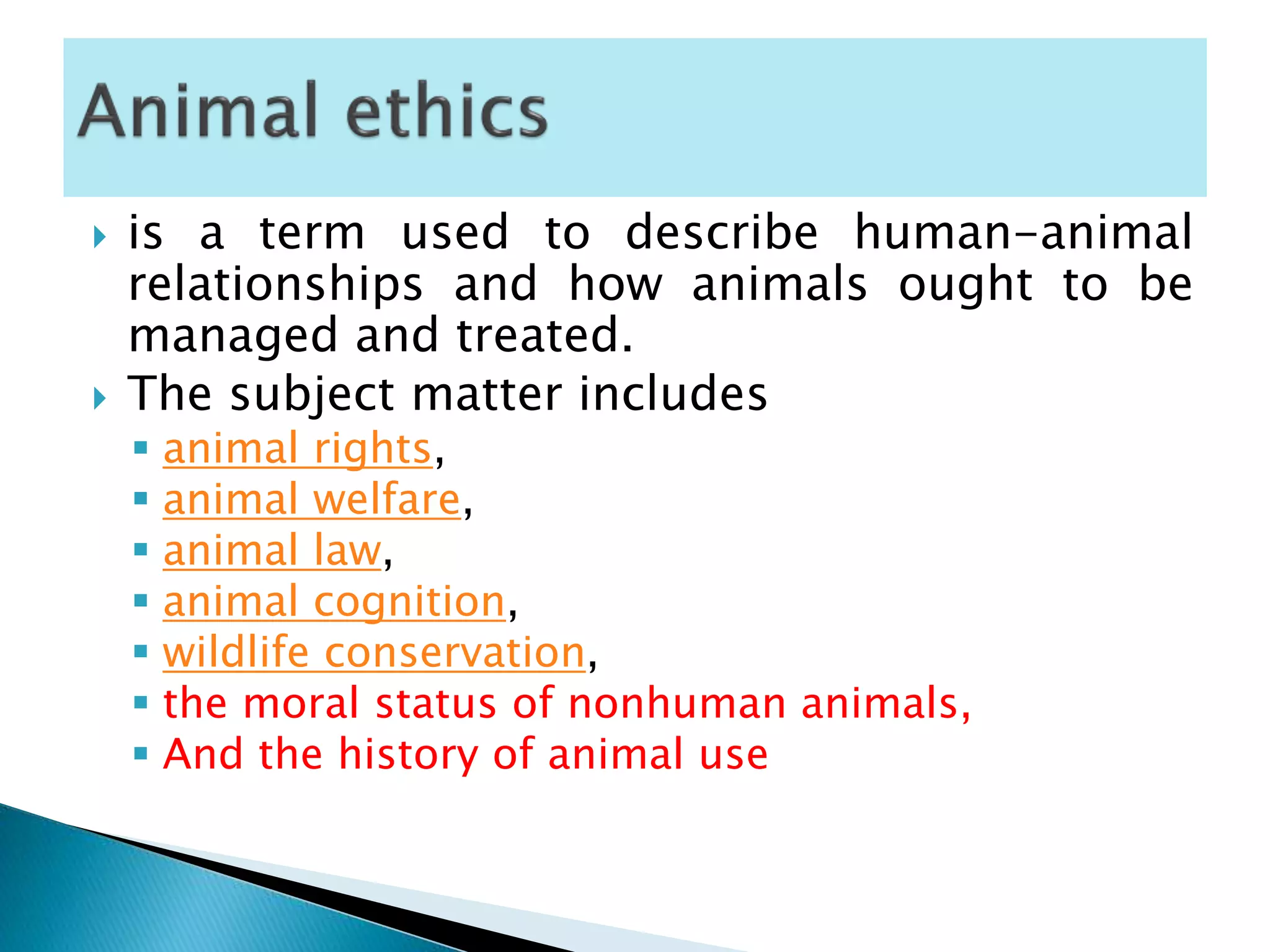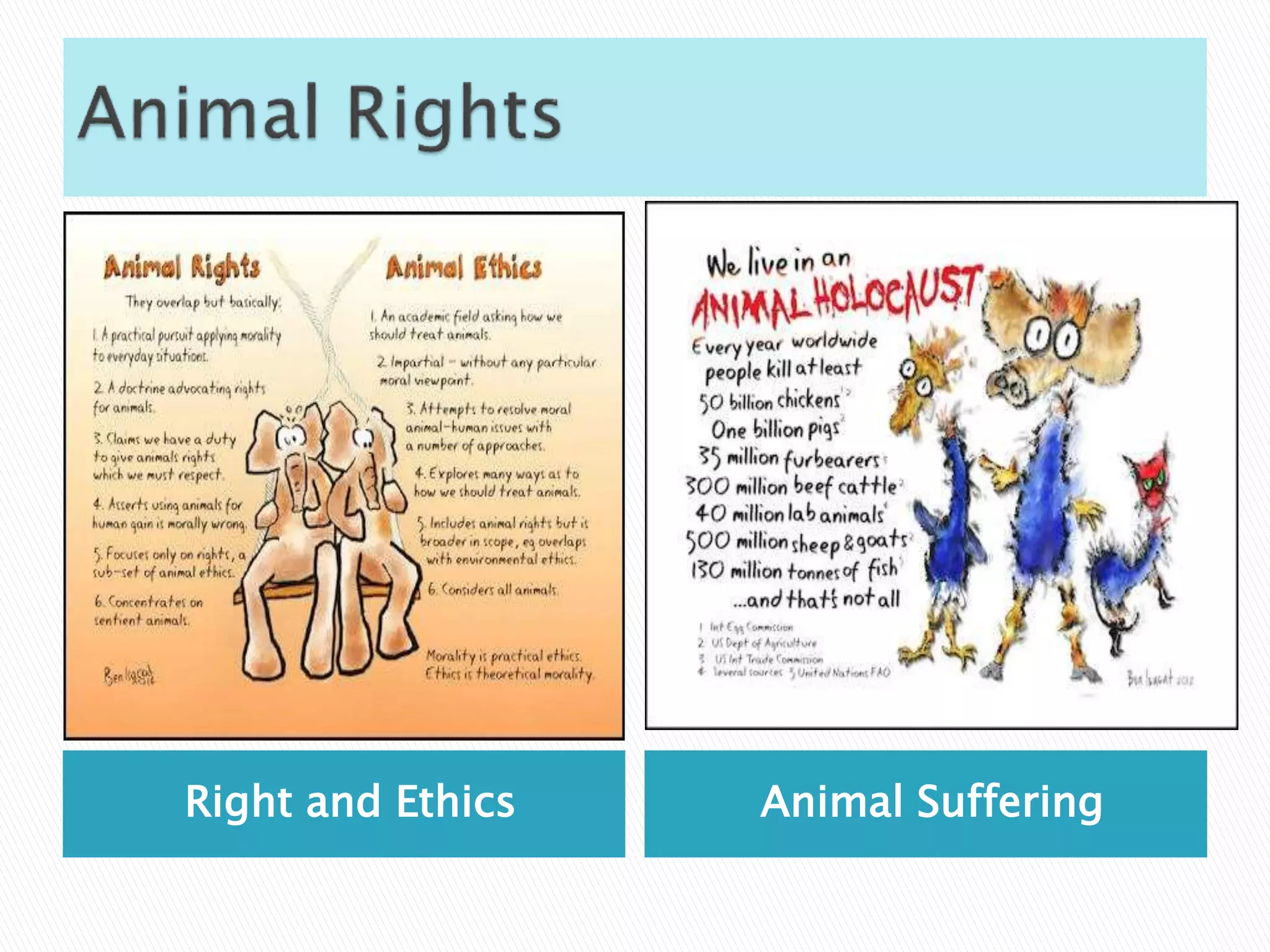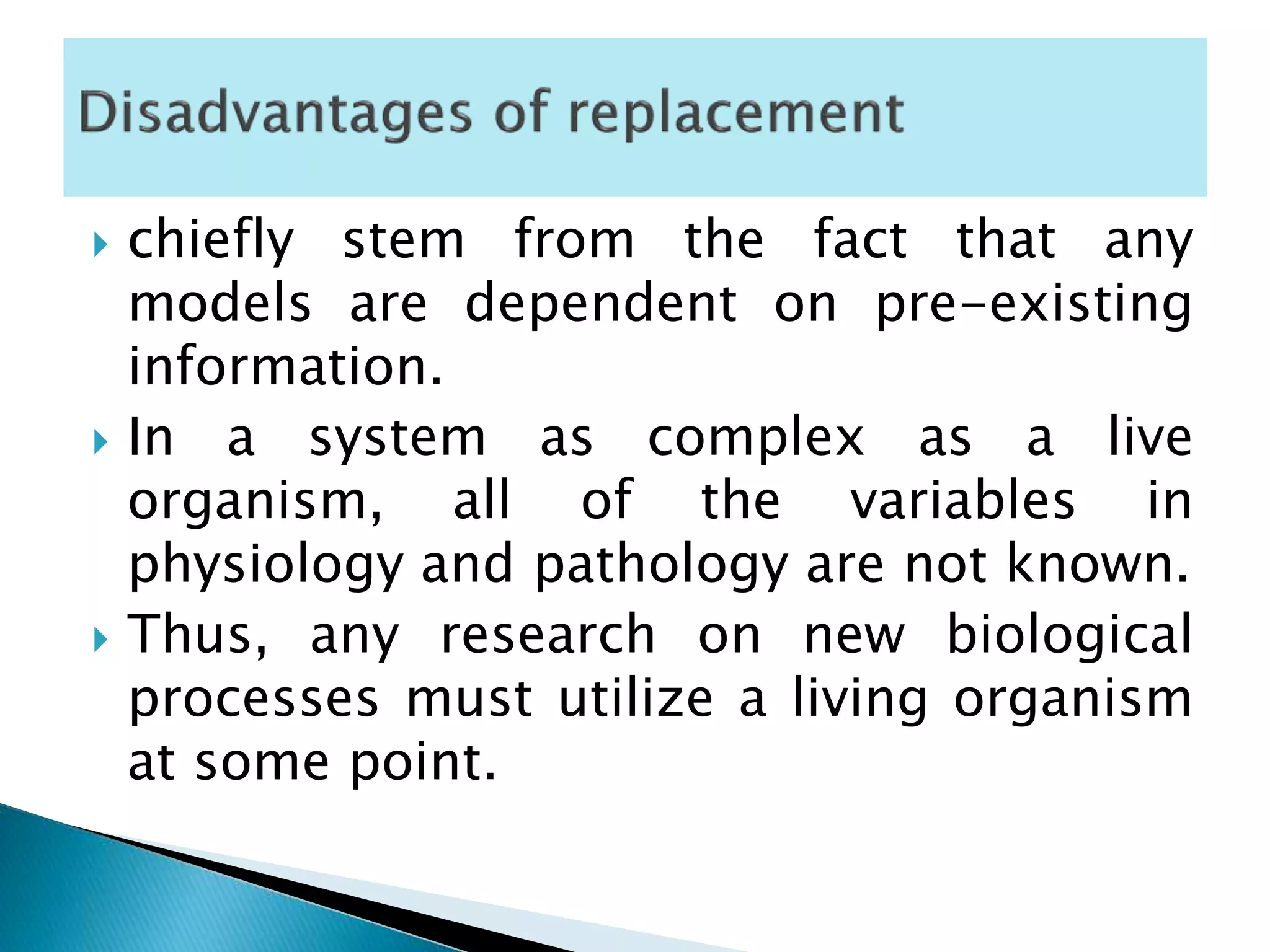The document discusses the ethical implications and practices surrounding the use of animals in research, emphasizing the need for humane treatment and consideration of animal welfare. It outlines the 'Five Freedoms' that should be ensured in animal management, as well as the 'Three Rs' principle aimed at reducing the impact of research on animals through replacement, reduction, and refinement. The document also addresses various viewpoints on animal experimentation, highlighting both its necessity for human benefit and the moral concerns associated with causing animal suffering.









































